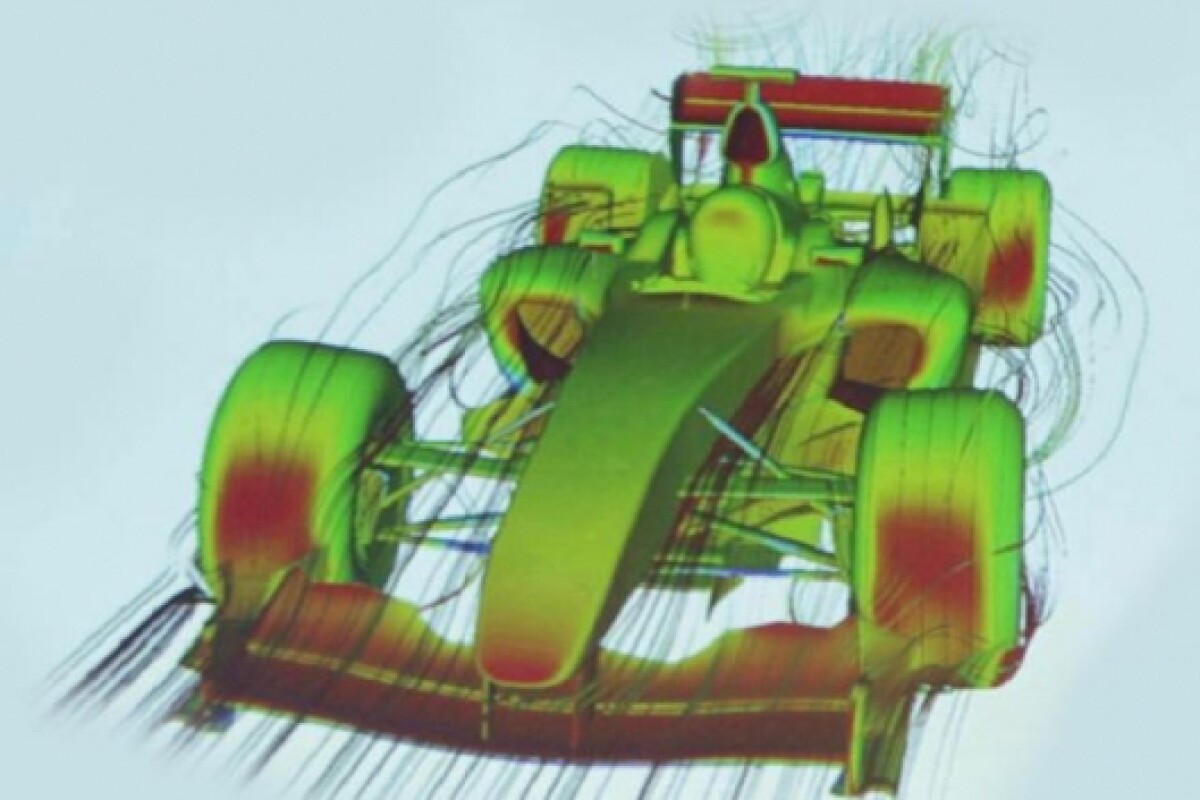January 16, 2007 The seemingly endless amount of money available in Formula One is directly related to its audience size and the influence it has. Success in Formula One, the world’s most watched sporting series, is the world’s most visible gauge of automotive technological prowess, and it is so sought after because it adds value to the company brand name. With BMW entering the fray under its own name last year, it isn’t about to settle for anything less than the top step of the podium and has embarked on its quest with the aid of one of the world’s most powerful computers. The BMW Sauber F1 Team new super brain, Albert2 is Europe's fastest computer currently used in industry. It’s roughly three times faster than its predecessor and is employed solely in the study of computational fluid dynamics (CFD). Rather than going with the current trend where many teams are building a second wind tunnel, BMW invested its racing budget in Albert2, which is quite a specimen. It’s main memory is 2,048 Gb – it 256 nodes with two Intel Xeon 5160 processors each, and each of these has two cores. This results in a total of 1024 cores and a maximum computing power is 12,288 GFlops. This means that Albert2 is capable of performing 12,288,000,000,000 floating-point arithmetic operations per second.
BMW Motorsport Director Mario Theissen: "Aerodynamics has a crucial influence on the performance of modern Formula 1 cars, with experimental work in the wind tunnel and computational fluid dynamics complementing each other. The launch of Albert2 means a decisive reinforcement of our CFD capacity. Unlike other teams, we are not planning to build a second wind tunnel but will continue to bank on the consistently expanding potential in this area. For the new season, we have set the goal of further reducing the gap to the top. Our new Supercomputer based on Intel technology is an important tool supporting us in this effort."
"The powerful Dual-Core Xeon processors perfectly match the high demand on computing power of the BMW Sauber F1 Team. The cluster based on these processors is one of the fastest in the world running computational fluid dynamic applications," said Christian Morales, Vice President & General Manager of Intel Europe, Middle East and Africa. "With the move to Multi-Core we are able to meet the future demand on computing power of the BMW Sauber F1 Team for computational fluid dynamics."
According to the criteria defined for acceptance in the Top-500 list of Supercomputers, this data makes Albert2 5.5 times faster than its predecessor, Albert. In the field, though - as with any computer - the software used plays a crucial part when it comes to speed. But even when running the complex programs for CFD calculations the increase is immense: when using the Fluent application, the average performance improvement amounts to a factor of three.
The architecture of the Supercomputer was developed by the Swiss company DALCO. A key objective was the achievement of high levels of efficiency as well as very good scalability, meaning that operations can be split among many processors without any significant loss of performance.
The software for the CFD calculations is supplied by the German subsidiary of the American company Fluent, Inc., a wholly-owned subsidiary of ANSYS, Inc. since May 2006. Their specialists have been working together with the CFD engineers in Hinwil for several years, optimising the software step by step.
The Intel processors operate inside High Density Racks from American Power Conversion (APC). These combine power supply, cooling and environmental monitoring in an optimised rack construction. The Supercomputer consists of a total of ten racks, each having a width of one metre, a depth of 1.20 metres and a height of 2.30 metres. This results in a total length of nine metres and a total weight of 21 tons.
Albert2's enormous technological potential is used for analyses in the area of aerodynamics. By means of CFD aerodynamics components for Formula 1 cars are calculated on the computer, using numerical grid models that often consist of more than 100 million cells. CFD plays an important part in the development of front, rear and auxiliary wings as well as engine and brake cooling as another key area.
For the CFD specialists, the computing power provided by Albert2 means that they can perform their calculations either at higher speed or greater accuracy. Willem Toet, Head of Aerodynamics for the BMW Sauber F1 Team, says: "Thanks to Albert_ we can calculate more variants and more complex models which, in the end, results in an advantage on the stop watch. Of particular benefit is the system's good scalability which gives us a very high level of flexibility."
Computational fluid dynamics does not compete with the work in the wind tunnel but complements it. During the development of the front wing, for example, numerous variants are calculated using CFD before the most promising of them are tested on the 60-percent model in the wind tunnel.
"A major advantage of CFD is the ability to simulate the air flow, which enables us to understand why one part is better than another. Consequently, there is a cross-fertilization between simulation and experimental aerodynamics," Toet added.












